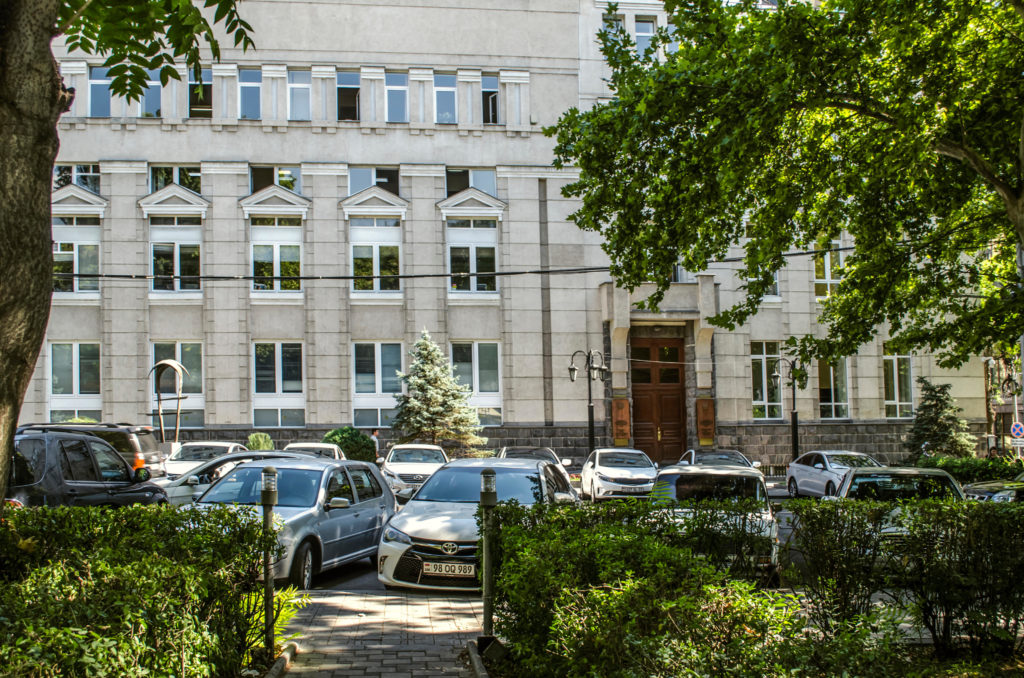YEREVAN
Armenia’s Central Bank raised its key refinancing rate to 6.5 percent to bring inflation, pushed up by the rising cost of food, tobacco and alcohol, back down to within its target range.
The central bank raised the key refinancing rate by 0.5 percent, the third increase since February, when it raised it by 0.25 percent. It kept it unchanged at 5.5 percent in March before by raising it again by 0.5 percent in May to 6 percent. The lombard repo rate was set at 8 percent, and the deposit rate at 5 percent.
Consumer prices in Armenia were up 5.9 percent year-on-year in May after inflation climbed to 6.2 percent in April, exceeding the central bank’s target range of 2.5 to 5.5 percent for this year. Though prices shrank in May by 0.4 percent from a month earlier, it was not enough to offset an increase in April, when the consumer price index rose by 1.3 percent.
May’s inflation figures showed that prices for food products and non-alcoholic beverages rose 7.5%, and the prices of alcohol and tobacco products rose 8.7%. In the period from January to May, inflation was an annual 5.5 percent.
Though Armenia reported rapid growth in recent years, a year of restrictions to curb the spread of COVID-19 and a six-week conflict between Azerbaijan and ethnic Armenian forces over the Nagorno-Karabakh region and surrounding territories have taken their toll on its economy. Armenia’s gross domestic product (GDP) shrank 3.3 percent year-on-year in the first quarter of 2021 as the impact of the coronavirus pandemic and the war over Nagorno-Karabakh dampened prospects of recovery.
Armenia accepted a Russian-brokered ceasefire to end the bloody conflict which secured territorial gains for Azerbaijan. The country’s economy contracted by 7.6 percent in 2020, mainly reflecting a decline in services and trade.
Despite this decline, some sectors still showed growth in January to March this year, including administrative and related activities, which recorded an increase of 7.3 percent, healthcare and social services, which were up 7 percent, construction – up 3.8 percent, water supply and sanitation – up 3.7 percent, and agriculture, forestry and fishing, with an increase of 1.5 percent.
The government predicts economic growth this year of 3.2 percent, though Finance Minister Atom Janjughazyan acknowledged December that achieving that level of economic growth “would require hard work.”
The country’s Central Bank downgraded its own growth forecast earlier this year to 1.4 percent from 2 percent.
According to the World Bank’s latest forecasts, Armenia’s economy is expected to grow 3.4 percent in 2021 and more strongly in 2022, by 4.3 percent. The World Bank’s current forecast assumes that the shocks from both the pandemic and the conflict will dissipate, tourism recover and consumer and business confidence improve.
The International Monetary Fund (IMF) said in April it expected Armenia’s economy to expand by around 1 percent in 2021 followed by 3.5 percent growth next year, although the recovery will be protracted.
“The recovery is likely to be protracted. While there is uncertainty about the pace of the recovery, our conservative outlook expects growth of around 1 percent in 2021 and 3.5 percent in 2022,” the IMF said in a statement.
The Fund said that economic recovery should be supported by “immediate policy priorities, including fast-tracking large-scale vaccinations, timely implementation of planned public investment and protecting vulnerable households.”
The IMF added that maintaining strong policies and advancing fiscal and structural reforms in the months ahead will be critical to strengthen confidence and underpin a durable and inclusive recovery.
Armenia issued Eurobonds worth $750 million in February to manage its increased public debt and budget deficit.

